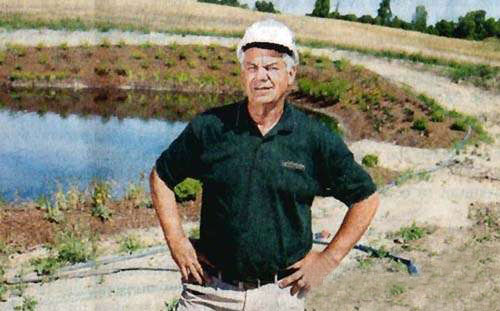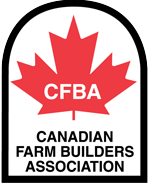Large Farm Buildings Risk of Fire
In his role as CFBA President, Gary speaks about the risk of fire in large farm buildings and how it relates to the Farm Building Construction Industry.
Below is the article from the August 13, 2011 Toronto Star
OMAFRA has studied the fact that more animals are being destroyed in farm fires as the trend is towards higher numbers of animals at certain facilites. A committee released a document this spring suggesting that fire separations and regular inspections may reduce the risk of farm fires.
The OMAFRA article: "Reducing the Risk of Fire on Your Farm" is free of charge and can be ordered by clicking the following link:
Publication 837 http://www.omafra.gov.on.ca/english/engineer/facts/reduceriskfire.htm
Factory Farms and Risk of Fire
originally published August 13, 2011 - The Toronto Star
The growth in Ontario of large- scale factory-farm operations, which can hold thousands of ani-mals in close quarters, is increasing the risk of loss of livestock in fires.
The number of animals who have lost their lives in barn fires has risen steadily, according to Canadians for Ethical Treatment of Food Ani-mals. Across the country, the group says 30,500 animals died in 2008, followed by 51,900 in 2009, be¬tween 115,909 and 125,409 in 2010, and 96,789 until July 26 of this year.
A document from the technical advisory committee on farm fires, set up by Ontario's Ministry of Agri-culture, Food and Rural Affairs, noted, "The evolution towards large-scale farm operations has fur¬ther heightened the need to address the problem of barn fires and fires in large farm structures."
This spring, the committee re-leased a document, "Reducing the Risk of Fire on Your Farm." It sug¬gests regular inspection of electri¬cal and mechanical equipment, re¬moving combustible materials, and using fire separations in barns to divide high-risk equipment and ac¬tivities from animals.
Gary Van Bolderen, president of the Canadian Farm Builders Asso-ciation, says his Barrie company, Dutch Masters Construction Ser-vices Ltd., has never put in a sprin-kler system_ "Out in the country there may not be enough water."
Ajay Gill, the manager of farm and commercial underwriting with North Waterloo Farmers Mutual Insurance Co., one of the largest farm insurers in Ontario, says his company, which has about 8,000 farm clients, has always recognized farmers who have an alarm system in their barns, but it decided to roll out a program that gives discounts when farm buildings are equipped with a centrally monitored alarm system that detects smoke or a rise in temperature.
Adely VanBenthem, who owns Bensview Farms, a dairy farm in Hagersville, southwest of Hamil-ton, lost 74 cows and calves out of a herd of 127 in a fire on March 4, 2010, which burned his three barns.
The blaze started while his teen-aged son was using a gas-powered straw chopper in one of the barns_ Straw particles landed on the muf-fler and the engine caught fire, he says. As his son pulled the chopper out of the barn, it came into contact with a pile of straw "and it ignited the whole straw pile," VanBenthern says. "The straw barn was connect-ed to the dairy barn. It just spread and you couldn't get it out."
After being housed at neighbours' barns for about a week, the rescued cattle moved to a larger facility in Aylmer until VanBenthem com¬pleted a new barn last October.
The new structure, he says, "was done according to government regulations."
It includes three fire separations near the ceiling to prevent the spread of fire, but no alarm.
We didn't have enough insurance for what we did build, so we had to borrow a bunch of money to re-build," says VanBenthem, who runs the farm with his wife Deborah. But they did have income insurance, which helped pay the bills.



